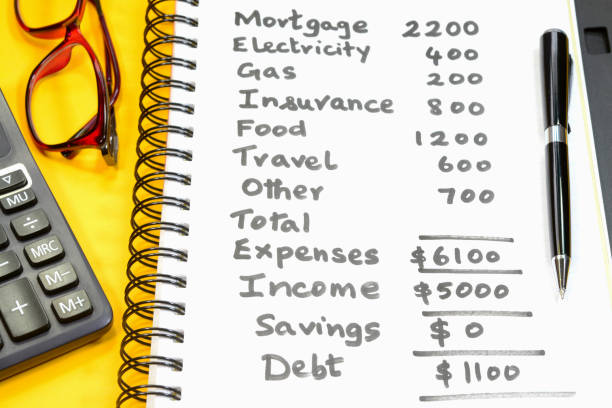 Entering one’s forties is often envisioned as a period of peak financial stability, a time to reap the rewards of two decades of career-building and prudent saving. Yet for a growing number, this decade becomes a crucible of anxiety, defined not by prosperity but by the suffocating weight of overextended personal debt. This financial strain transforms what should be a prime earning period into a precarious high-wire act, with profound implications for both present well-being and future security.The nature of debt in one’s forties carries a unique gravity. It is rarely the result of frivolous spending alone. Instead, it is frequently a perfect storm of life’s major expenses: a mortgage on a family home, auto loans for reliable transportation, and, most burdensomely, the cumulative cost of raising children, from childcare to education. Compounding this are often lingering student loans from one’s own youth and high-interest credit card debt accrued from navigating previous financial shortfalls. This debt load arrives precisely when financial responsibilities are at their maximum, creating a relentless pressure to maintain high earnings just to service monthly obligations.The psychological toll is immense. The constant calculation and juggling of payments erode mental peace, replacing the confidence of midlife with a pervasive sense of insecurity. Financial arguments can strain marriages, while the fear of an unexpected expense—a major car repair or a medical bill—becomes a source of constant low-grade dread. This debt-induced stress spills over, impacting health, focus at work, and the overall quality of life, turning the pursuit of the American dream into a exhausting race to stay afloat.Most critically, overextension in one’s forties steals from the future. Every dollar directed toward high-interest debt is a dollar not invested in retirement accounts, college funds, or other long-term wealth-building vehicles. The power of compound interest, a crucial ally for this age group, is lost. Consequently, the window for building a secure retirement narrows dramatically, forcing difficult choices between present necessities and a stable future. Ultimately, navigating this decade shackled by debt requires a sober reassessment of finances, often demanding disciplined budgeting, debt consolidation, and a recalibration of lifestyle to break the cycle and reclaim control before it is too late.
Entering one’s forties is often envisioned as a period of peak financial stability, a time to reap the rewards of two decades of career-building and prudent saving. Yet for a growing number, this decade becomes a crucible of anxiety, defined not by prosperity but by the suffocating weight of overextended personal debt. This financial strain transforms what should be a prime earning period into a precarious high-wire act, with profound implications for both present well-being and future security.The nature of debt in one’s forties carries a unique gravity. It is rarely the result of frivolous spending alone. Instead, it is frequently a perfect storm of life’s major expenses: a mortgage on a family home, auto loans for reliable transportation, and, most burdensomely, the cumulative cost of raising children, from childcare to education. Compounding this are often lingering student loans from one’s own youth and high-interest credit card debt accrued from navigating previous financial shortfalls. This debt load arrives precisely when financial responsibilities are at their maximum, creating a relentless pressure to maintain high earnings just to service monthly obligations.The psychological toll is immense. The constant calculation and juggling of payments erode mental peace, replacing the confidence of midlife with a pervasive sense of insecurity. Financial arguments can strain marriages, while the fear of an unexpected expense—a major car repair or a medical bill—becomes a source of constant low-grade dread. This debt-induced stress spills over, impacting health, focus at work, and the overall quality of life, turning the pursuit of the American dream into a exhausting race to stay afloat.Most critically, overextension in one’s forties steals from the future. Every dollar directed toward high-interest debt is a dollar not invested in retirement accounts, college funds, or other long-term wealth-building vehicles. The power of compound interest, a crucial ally for this age group, is lost. Consequently, the window for building a secure retirement narrows dramatically, forcing difficult choices between present necessities and a stable future. Ultimately, navigating this decade shackled by debt requires a sober reassessment of finances, often demanding disciplined budgeting, debt consolidation, and a recalibration of lifestyle to break the cycle and reclaim control before it is too late.
The snowball method provides psychological wins by eliminating entire debts quickly. This positive reinforcement can build motivation and discipline, making you more likely to stick with your overall payoff plan.
It significantly impacts your credit utilization ratio (amount owed divided by credit limit), which is a major factor in your score. High utilization signals risk to lenders. It also affects your payment history, another critical scoring factor.
You are protected by the Fair Debt Collection Practices Act (FDCPA). This federal law prohibits collectors from using abusive, unfair, or deceptive practices. This includes harassment, calling at unreasonable hours, making false statements, and discussing your debt with unauthorized third parties.
A common guideline is the 50/30/20 rule: 50% for needs, 30% for wants, and 20% for savings and debt repayment. If your debt is significant, you may need to temporarily allocate more than 20% to aggressively pay it down.
These plans average your annual utility costs into consistent monthly payments, helping avoid seasonal spikes and making budgeting easier.